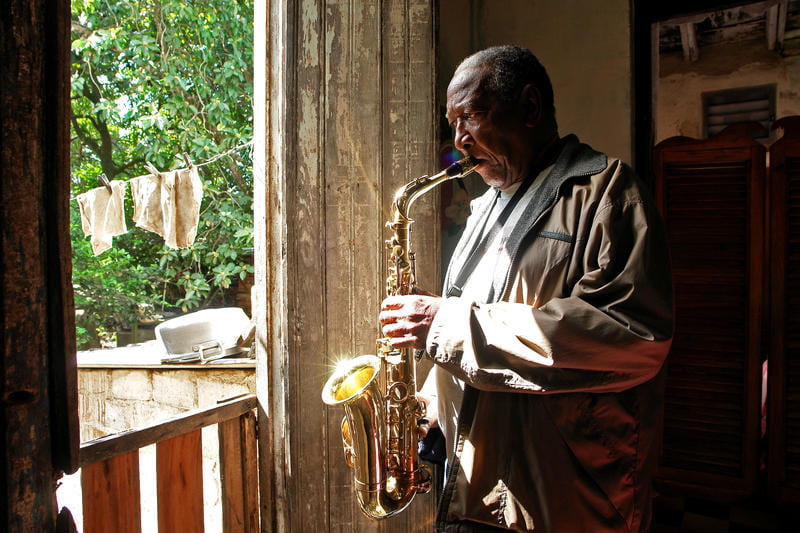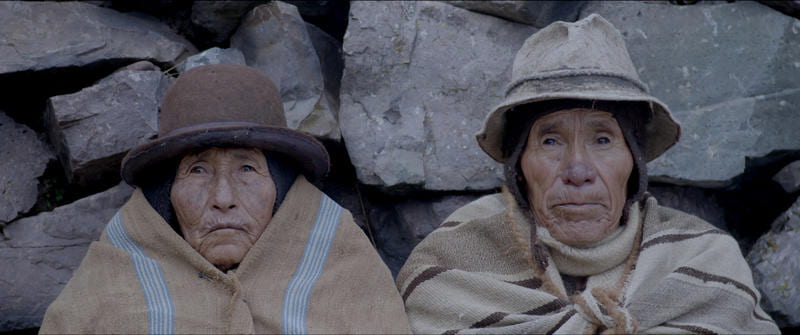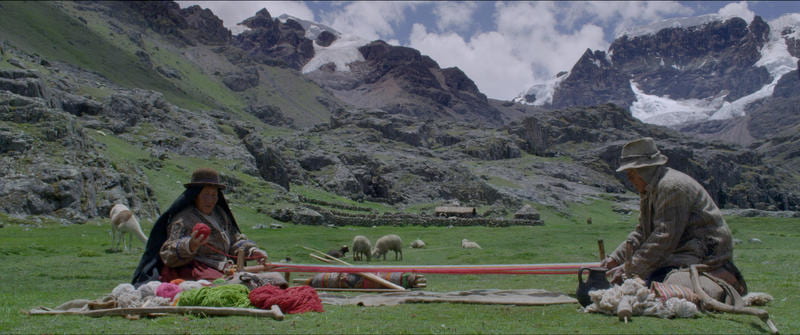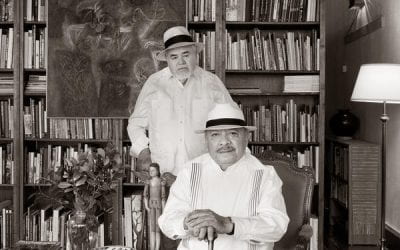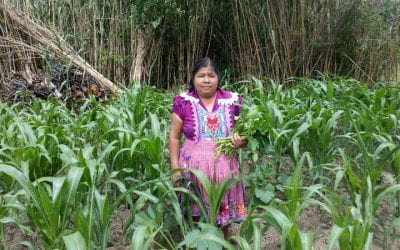Rejuvenating Old Age
Perspectives from Contemporary Latin American Cinema
Contemporary Latin American cinema is rejuvenating our perceptions of aging by keenly portraying the diversity of realities and problems the elderly often face. It shows the ways we live and the ways we grow older—dealing with loneliness, tackling illnesses and facing death.
With a deeply humanist gaze, a cluster of filmmakers has created vivid personal and social portraits of old men and women struggling to come to terms with their lives, families, friends and bodies, experiences that vary depending on their ethnicity, class and gender. Through their choices, mistakes and regrets, we can get a rare glimpse at the secrets of aging and dying well.
Bodies
Our bodies are the first causalities of aging. Often the elderly aspire to separate their selves from their bodies, thus tying their will to live as the main source of their identities. This is often the case among artists. In Rosana Matecki’s documentary Los Viejos (The Oldies, Cuba, 2018), we witness a group of musicians from Santa Clara frequently looking at their craggy faces and declining bodies in the mirror while passionately singing traditional ballads about love and life. In the end, their boundless passion for life transcends their bodies and brings them joy and peace. Demographically, Cuba is growing old fast and politically the country faces a generational change. Los Viejos addresses those changes and seems to praise both the past ruled by elders as well as the future now in hands of the new generation.
A gloomier but more nuanced picture of old age comes from Alex Santiago Pérez’s Las vacas con gafas (Cows Wearing Glasses, Puerto Rico, 2014). Here the main character, Marcelino Sariego, a former acclaimed painter working as a university teacher in San Juan, realizes he will soon go blind. Yet, his physical condition pales next to his existential void that his career had superficially covered. Indeed, the prospect of losing his sight has opened his eyes to what matters in life. Marso, as his friends call him, now attempts to reconnect with his estranged daughter, whom he has not seen in years.
Yet a meaningful life, as good art, Alex Santiago subtly implies, requires us to face our past with all the harsh truths that his characters have thus far tried to avoid. The moral of the story suggests that only by directly confronting the truth and by questioning what we are told and shown, we can really see, understand, forgive and move forward. In fact, Las vacas con gafas is full of visual and narrative traps inviting viewers to critically approach what they have seen and been told. This attitude seems to be crucial to understand family relationships and as an antidote against our emotional blindness that often keeps family members apart. In the end, Las vacas con gafas suggests that both Marso’s and her daughter’s inability to honestly confront past wounds had more meaningful consequences than Marso’s illness.
Souls
Loneliness remains the most damaging issue for the elderly; it is not the decline of the body but the isolation of the soul that terrifies the most. In fact, loneliness goes deeper than the experience of living or being alone; it deals mainly with a lack of meaningful connections. Therefore, most nursing houses where one might expect more social interaction among old people can easily be turned into a lonely hell.
Catalina Vergara and Cristian Soto’s documentary La última estación (The Last Station, Chile, 2013) convincingly shows the lack of human connection in a nursing home in Chile. Listening to the institution’s loudspeaker—usually recounting who has passed away—constituted the residents’ only shared experience. Yet as this voice vanished, an excruciating silence returned to corridors, dorms, gardens and bodies. La última estación is less a condemnation of nursing homes and more a portrait of family neglect. As the radio voice points out, families usually come to visit at the beginning but then slowly disappear until their siblings pass away. Then they cry and collect again the dead bodies to finally relocate them in a different kind of grave.
Indeed staying at home may represent a similarly desolated landscape if the family remains absent. Tito Molina’s Silencio en la tierra de los sueños (Silence in Dreamland, Ecuador, 2013) immerses us in the life and dreams of a widow living a silent life, only interrupted by the radio, her favorite television show (“Tres Patines y La Tremenda Corte”), her prayers and outside noises. Although she aspires to reach out to the world, her only way of going outside is dreaming. Evidently wealthier and healthier than the average person who may end up in a nursing house, the main character also seems condemned to stoically wait for death to come. In the meantime, she enjoys watching three musicians playing boleros nearby her house and befriends a street dog. In narrative terms, this friendship borders on the corny but stands as a good reminder of the great need of companionship in old age.
In Óscar Catacora’s Wiñaypacha (Eternity, Peru, 2017) the physical isolation of an elderly indigenous (Aymara) couple is extreme. They survive in the peaks of the Andes with their livestock and the memories of their son who not only has forgotten them but has also turned his back on his culture. Notwithstanding their poverty and advanced age, Willka (sun) and Phaxsi (moon) live in harmony with each other and with nature; they practice their rituals, tend to their animals and fondly take care of themselves. Thus, in this landscape loneliness is hardly seen or felt. Sadly this fragile balance breaks apart soon and the absence of their son then takes a tragic dimension.
Women
Studies have shown that friends may be even more important than families in keeping us happy, healthy, and connected in old age. Maite Alberdi’s tribute to her grandmother and her female friends, La Once (Tea Time, Chile, 2014), documents the laughs, snacks, anecdotes and remembrances that a group of former schoolmates have shared once a month at tea time for the last 60 years. La Once is an exquisite display of friendship as well as a spectacle of sugary nibbles that any doctor would forbid to ladies of their age. Their conversations, luxurious dining tables, and servants indicate well-to-do, religious and, in some cases, military backgrounds. Yet they appear prone to question the traditional values and gender roles in which they were educated, at times astonishingly slipping into overt sexual remarks. For instance, although they cherish marriage and their husbands, they openly discuss the pervasive and painful effects of infidelity and machismo on their lives.
Friendship, as they practice it, consists of listening to their stories (several times told) and laughing at them as if they were told for the first time. They laugh at their lives as well as at their deaths. “Dying is inconsequential,” declares Maria Teresa in a posthumous letter, read aloud in the last get-together that Alberdi filmed, asking her friends to ignore her death and inviting them to keep talking about her as usual without sadness or solemnity.
At times, however, the elderly women face an uphill battle to live their lives alone as they please, even if it means confronting their families. In Violeta al fin (Violeta at Last, Costa Rica, 2017), Hilda Hidalgo presents a 72-year-old divorced Violeta, fighting to preserve her sense of independence against her patronizing children and good-for-nothing ex-husband. Violeta embodies the ideal of strong and unconventional women Hidalgo found in her mother, her aunties and all the unflinching grandmothers that many Latin American viewers could easily identify in their own family.
Against the advice of her daughter and son, Violeta lives alone in a big old house with a spacious garden and plans to use it as a hostel. When she rents a room to her Mexican swimming instructor, friends and family get uneasy. Besides raising eyebrows, they cannot do anything to stop her. Soon, however, she discovers that her ex-husband has mismanaged their finances and the bank is about to seize her beloved house. Of course, Violeta fiercely fights back, revealing not only the meanness of modern banking against the elderly but also showing the importance of securing financial independence as the basis for keeping personal freedom.
Overall, Violeta struggles against the attempts to make her dependent in keeping with the prejudices associated with her gender and age. Violeta al fin, however, provides an example of how an able body and an indomitable spirit are not enough without a proper financial backing to enjoy a good life. The fact that a good financial standing underlines the greater sphere of freedom of the female characters in both Violeta al fin and La Once leaves us wondering how difficult it may be for poor elderly ladies to preserve their autonomy in a region where women face greater poverty levels than men.
Endings
In old age, the arrival of death looks awfully close. Yet when it finally comes it often places its heavy hand upon our loved ones who would eventually take care of our bodies and remaining possessions. Obviously, capturing this period of transition in a film represents an almost insurmountable challenge. However, Andrés Perugini offers us a glimpse by recording the aftermath of the passing of her grandmother, Irene Piriz, in La intimidad (Intimacy, Argentina, 2017). The documentary is divided into two parts. In the first part, Perugini introduces us to Irene and we can attest the great care she puts into keeping her garden full of life and making sure that everything in her house works well. The second part takes places after she dies and chronicles the way the family handles, classifies, distributes or throws away Irene’s material remains, thus slowly emptying her house. Although Perugini’s family was conscious of the filming, they carried out this dismantling process, which also includes burning personal letters, with chilling ease.
Irene’s absence lurks in every scene; now that she is gone, her vitality and presence stand in strong contrast with the withering flowers and neglected garden. In the end, the house is sold and its new inhabitants slowly take over what once was her most intimate space. The coming of a new family feels like the final gravestone over Irene’s life. Neither burial nor tears were shown in Perugini’s film yet La intimidad resembles the mechanical entombment of Irene’s living presence.
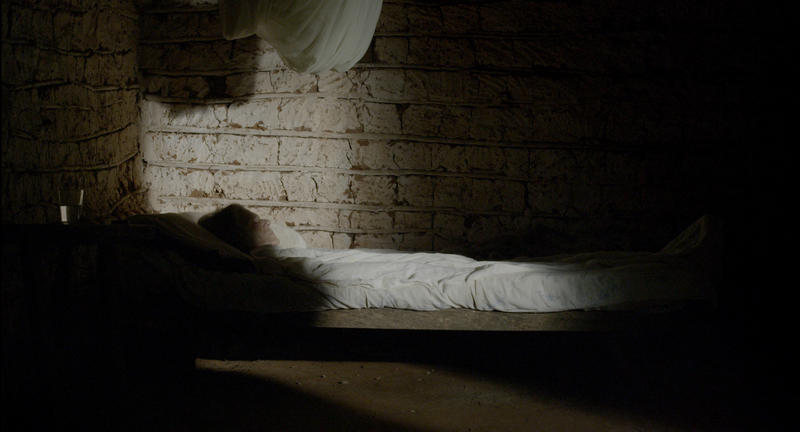
However, what happens when such presence lives in our hearts rather than in the material things of the deceased? How do the elderly face the death of a beloved life partner? Pablo Lamar’s La última tierra (The Last Earth, Paraguay, 2016) brings us back to a solitary jungle where an elderly couple lives in an austere adobe hut. La última tierra presents us an intimate portrait of Evangelina’s last day on earth and the depth of Amancio’s caring for her as he pre-masticates her last meal, cleans up her body, watches her sleep and calmly goes about digging her grave. His grief, however, gradually surfaces and, unable to handle his inner feelings, he sets their home on fire. La última tierra lacks words or straightforward explanations. Nevertheless through Amacio’s facial expressions we can catch a glimpse of his memories and the growing pain he endures as he envisions a life without his life. Once again, another house gets destroyed not just in material terms but also as a home that used to shelter a loving family. Perhaps, in the end, the elderly, like the rest of us, may only need love.
Winter 2019, Volume XVIII, Number 2
Víctor Manuel Cázares Lira has a Ph.D. in history from the University of Edinburgh. Before he earned a master’s degree in history at the University of Uppsala and a bachelor’s degree in political science at UNAM. He specializes on the historiography of the American Founding and now researches on early Latin American Constitutionalism. Writing about cinema is one of his great passions.
Related Articles
Video Interview with Flavia Piovesan
Flavia Piovesan is a member of the Inter-American Commission on Human Rights, Professor of Law at the Pontifical Catholic University of São Paulo and 2018 Lemann Visiting Scholar at the…
Aging: Editor’s Letter
There is no smell of pungent printers ink permeating my office. My interns—Sylvie, Isaac and Marc—are not scrambling to find FedEx boxes to send out ReVista issues to authors and photographers all over the world. I cannot feel the silken touch of the printed page…
A Story of Agricultural Change
Francisca Hernández García, 92, lives in San Miguel del Valle, a town of around 3,000 inhabitants in the Central Valleys of Oaxaca, an hour east of the capital city. She is one of the few remaining…

